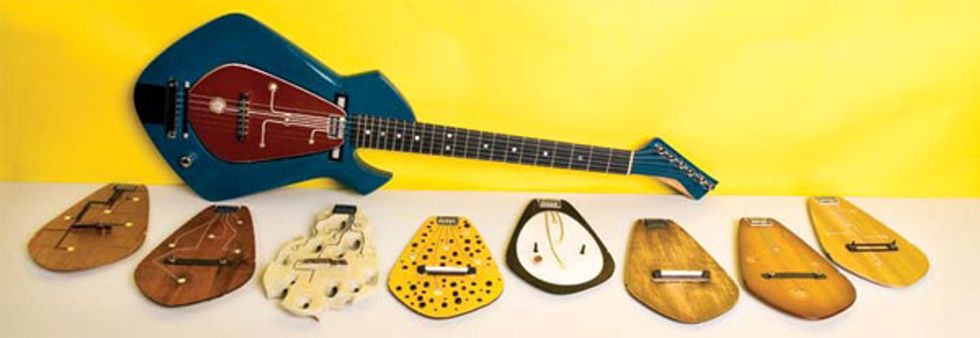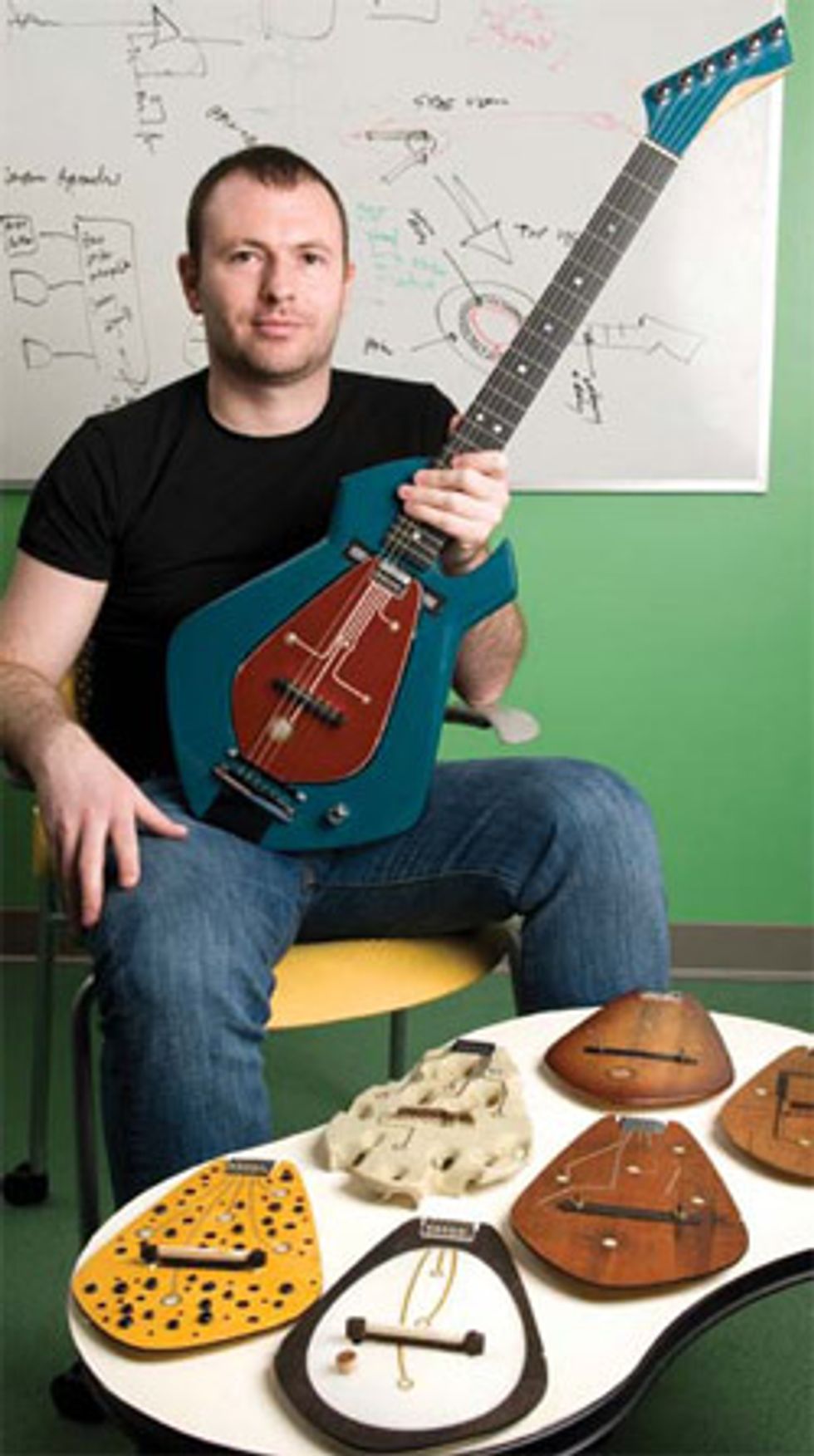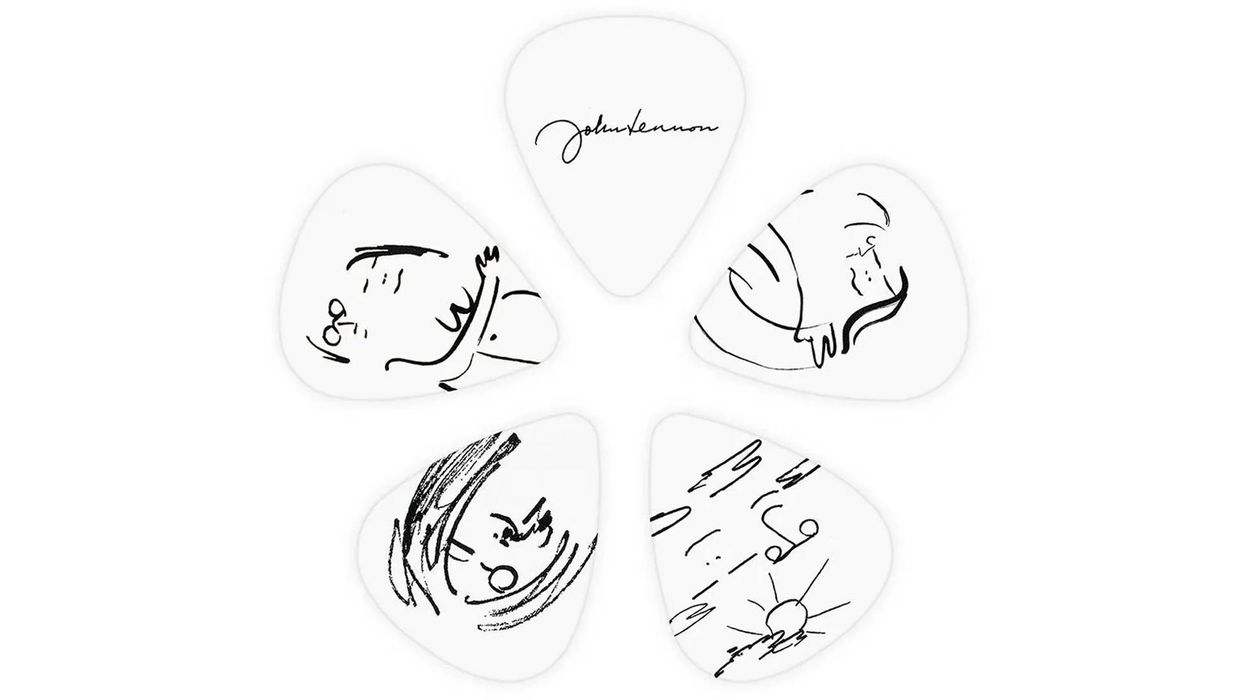Cambridge, MA (March 10, 2009) -- It seems like every few months, an instrument heralded as “the next
great technological advancement in guitars” is unveiled. From the Moog
Guitar and Gibson’s Dark Fire to more obscure concepts, like 3D
printing for tonal variety, there are a substantial number of builders
looking to advance the boundaries of the guitar. In many cases, this is
accomplished through digital technology and modeling, which many
players feel still falls short of being perfectly authentic. This is
why we were particularly interested in the concept known as the
Chameleon Guitar. It sticks to the basics of using different tonewoods
to achieve a variety of tones, but employs technology to make it
happen.
As you might imagine from the name, the Chameleon Guitar has the ability to be everchanging and adapting. Created by MIT Media Lab master’s student Amit Zoran, the Chameleon is an electric guitar with an interchangeable central soundboard. Zoran’s idea was to be able to “plug in” the acoustic qualities that are unique to each piece of wood without changing the feel of the guitar.
Each interchangeable soundboard provides a unique tonal base due to its composition and structure. From there, the signal is processed through five pickups and can then be manipulated digitally in the guitar’s built-in computer to simulate different sizes or shapes of the same wood—allowing for sounds that would not otherwise be physically possible. Zoran says that the nature of the Chameleon Guitar lends itself to greater freedom to experiment. Instead of having to buy an entire new guitar to experience different wood combinations, players would be able to make a relatively small investment in a new soundboard. It would also be possible to take advantage of the tonal characteristics of pieces of wood that aren’t large enough to build a full guitar. For example, Zoran used a wooden beam from a bridge in Vermont to build a soundboard.

Zoran built the first proof-of-concept version with instrument builder Marco Coppiardi last summer, and debuted a more polished version at the Consumer Electronics Show in Las Vegas in January ’09. He plans on continuing the guitar’s development as his doctoral thesis project, and hopes to eventually develop it commercially.
Watch a video of Zoran explaining and playing the Chameleon Guitar:
As you might imagine from the name, the Chameleon Guitar has the ability to be everchanging and adapting. Created by MIT Media Lab master’s student Amit Zoran, the Chameleon is an electric guitar with an interchangeable central soundboard. Zoran’s idea was to be able to “plug in” the acoustic qualities that are unique to each piece of wood without changing the feel of the guitar.
Each interchangeable soundboard provides a unique tonal base due to its composition and structure. From there, the signal is processed through five pickups and can then be manipulated digitally in the guitar’s built-in computer to simulate different sizes or shapes of the same wood—allowing for sounds that would not otherwise be physically possible. Zoran says that the nature of the Chameleon Guitar lends itself to greater freedom to experiment. Instead of having to buy an entire new guitar to experience different wood combinations, players would be able to make a relatively small investment in a new soundboard. It would also be possible to take advantage of the tonal characteristics of pieces of wood that aren’t large enough to build a full guitar. For example, Zoran used a wooden beam from a bridge in Vermont to build a soundboard.

Zoran built the first proof-of-concept version with instrument builder Marco Coppiardi last summer, and debuted a more polished version at the Consumer Electronics Show in Las Vegas in January ’09. He plans on continuing the guitar’s development as his doctoral thesis project, and hopes to eventually develop it commercially.
Watch a video of Zoran explaining and playing the Chameleon Guitar:























 Zach loves his Sovtek Mig 60 head, which he plays through a cab he built himself at a pipe-organ shop in Denver. Every glue joint is lined with thin leather for maximum air tightness, and it’s stocked with Celestion G12M Greenback speakers.
Zach loves his Sovtek Mig 60 head, which he plays through a cab he built himself at a pipe-organ shop in Denver. Every glue joint is lined with thin leather for maximum air tightness, and it’s stocked with Celestion G12M Greenback speakers.









